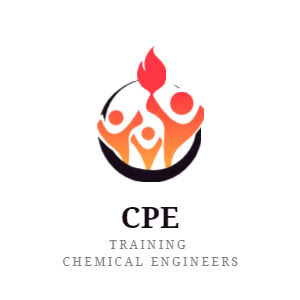A Plug Flow Reactor is a type of continuous reactor where reactants flow through a pipe without axial mixing. This design mimics the movement of discrete “plugs” of fluid, making it ideal for pharmaceutical processes involving reactions like hydrolysis, oxidation, or hydrogenation.
Key characteristics:
-
Reactants move in one direction
-
No mixing in the flow direction
-
Concentration and rate vary along the length
A: A Plug Flow Reactor is a type of tubular reactor where the reactants flow in one direction with no axial mixing. The concentration and temperature vary along the reactor’s length, and each fluid element moves like a “plug.”
A: The primary assumption is that there is no back-mixing. Each infinitesimal volume of fluid maintains its identity as it flows through the reactor, experiencing changing conditions along the length.
A: The concentration of reactants decreases progressively along the length of the reactor as the reaction proceeds, unlike in a Continuous Stirred Tank Reactor (CSTR), where it is uniform throughout.
A: Most industrial PFRs operate under steady-state conditions, meaning that the inlet and outlet conditions remain constant with time.
A: PFRs are suitable for:
-
Fast reactions
-
Exothermic reactions (with proper temperature control)
-
Reactions where high conversion per unit volume is desired
A:
-
Higher conversion per volume compared to CSTR for many reaction orders
-
Ideal for large-scale continuous processes
-
Simpler construction for tubular flow systems
A:
-
Poor temperature control in long reactors
-
Hot spots may form in exothermic reactions
-
Not ideal for slow reactions due to long reactor lengths needed
A: The general mole balance is:
Where:
-
= reactor volume
-
= molar flow rate of A
-
= conversion
-
= rate of reaction of A
Time (min) |
[A] (mol/L) |
|---|---|
0 |
1.00 |
5 |
0.82 |
10 |
0.67 |
15 |
0.55 |
20 |
0.45 |
25 |
0.37 |
30 |
0.30 |
35 |
0.22 |
40 |
0.15 |
45 |
0.10 |
50 |
0.06 |
55 |
0.04 |
60 |
0.02 |
Integral Method – Identifying Reaction Order
We test three common rate laws:
-
Zero-order:
-
First-order:
-
Second-order:
Now, we'll go with trial & error method in identifying the order of reaction by plotting the graphs for
Plot 1: [A] vs time
Inference: The line is not straight, indicating it is not zero-order.
Plot 2: ln[A] vs time
Inference: This graph shows a near-linear relationship, confirming a first-order reaction.
Plot 3: 1/[A] vs time
Inference: This graph deviates from linearity, ruling out second-order kinetics.
From the slope of the first-order plot:
Now, lets calculate the PFR capacity for an assumed molar flow-rate:
Given:
-
Molar flow rate
-
Initial concentration
Then:
Reactor Volume Calculation (PFR Design)
For a first-order PFR:
Assuming desired conversion ;
Thats it....!!
This is quite simple, however we have other techniques to identify the reactor volume based on Maximization of reactangles method, which is defined very clearly in Octave Levenspiel 3rd Edition by plotting
vs. conversion . This will be shown in the next post.


.png)
.png)




 Hi! I am Ajay Kumar Kalva, owner of this site, a tech geek by passion, and a chemical process engineer by profession, i'm interested in writing articles regarding technology, hacking and pharma technology.
Hi! I am Ajay Kumar Kalva, owner of this site, a tech geek by passion, and a chemical process engineer by profession, i'm interested in writing articles regarding technology, hacking and pharma technology. 
No comments:
Post a Comment